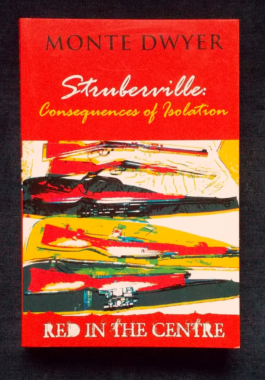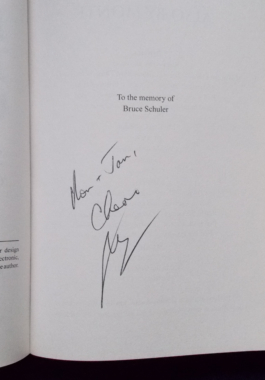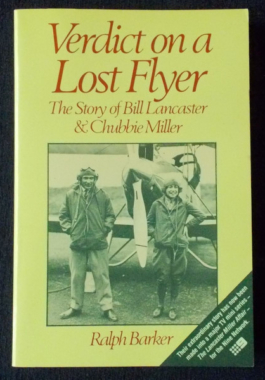- Sorry, this product is unavailable.
-
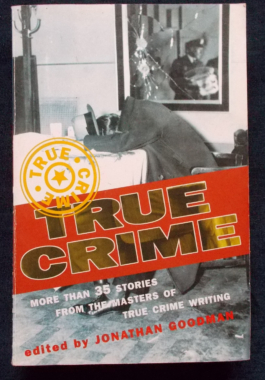 More than 35 accounts of notorious cases and lurid curiosities from the history of crime, described by criminology's most distinguished authors. In this volume: The murder of John Lennon; The rise and fall of Al Capone; The pathologist's account in the Nilsen case; Damon Runyan at a gangster's trial; Edgar Wallace at the scene of a crime; Abraham Lincoln's assassination; A hanging judge's diary; the death of Jesse James; The guillotining of Henri Landru; Jack the Ripper's real identity; W.M. Thackery: On Going To A Hanging; James Turber on a Broadway Gambler's demise; Edmund Pearson's Notes For Murderesses; the first electrocution at Sing Sing - and more.
More than 35 accounts of notorious cases and lurid curiosities from the history of crime, described by criminology's most distinguished authors. In this volume: The murder of John Lennon; The rise and fall of Al Capone; The pathologist's account in the Nilsen case; Damon Runyan at a gangster's trial; Edgar Wallace at the scene of a crime; Abraham Lincoln's assassination; A hanging judge's diary; the death of Jesse James; The guillotining of Henri Landru; Jack the Ripper's real identity; W.M. Thackery: On Going To A Hanging; James Turber on a Broadway Gambler's demise; Edmund Pearson's Notes For Murderesses; the first electrocution at Sing Sing - and more. -
 The courtrooms of the world have provided a stage for some of the most riveting human dramas ever told. Tension and conflict are the essence of a trial - sometimes with the threat of execution waiting at the end. Some of thee trials in this volume have changed the course of history, created new laws and have even introduced new words into the English Language: The Yorkshire Ripper; Charles I; Guy Fawkes; the Nuremberg trials and many more are featured, including the ever-popular and scandalous Profumo Affair. With black and white photographs.
The courtrooms of the world have provided a stage for some of the most riveting human dramas ever told. Tension and conflict are the essence of a trial - sometimes with the threat of execution waiting at the end. Some of thee trials in this volume have changed the course of history, created new laws and have even introduced new words into the English Language: The Yorkshire Ripper; Charles I; Guy Fawkes; the Nuremberg trials and many more are featured, including the ever-popular and scandalous Profumo Affair. With black and white photographs. -
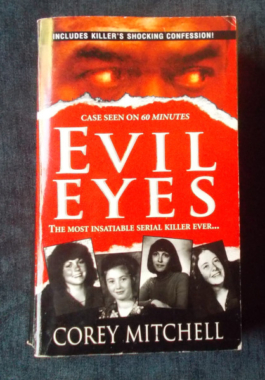 In Houston, Texas, on the morning of May 23, 1982, Carl 'Coral' Eugene Watts, 28, trapped two young women in their apartment. Only hours before, he'd killed another woman by drowning her in her bathtub. As Watts attempted to do the same to 20-year-old Lori Lister, her roommate Melinda Aguilar, 18, made a daring escape. Her courage led to Watts's arrest. Watts was a sadistic slayer with a lust for killing in a variety of ways: strangulation, suffocation, drowning and stabbing. He confessed to thirteen murders, but with no direct evidence to link him to the crimes, he managed to plea bargain his sentence down to 60 years for burglary. Due to a flaw in the Texas criminal justice system, Watts was supposed to be released from prison in 2006. Through the ceaseless efforts of investigators and the mother of one of his victims, Watts was finally tried and convicted to life in prison for a murder he had committed in Michigan in 1979. He died in 2007, still the prime suspect in approximately 90 other slayings. Experts theorise that Watts may have slain more than Ted Bundy, Jeffrey Dahmer, and John Wayne Gacy...combined. Here is the chilling story of how he almost got away with murder. Illustrated with black and white photographs.
In Houston, Texas, on the morning of May 23, 1982, Carl 'Coral' Eugene Watts, 28, trapped two young women in their apartment. Only hours before, he'd killed another woman by drowning her in her bathtub. As Watts attempted to do the same to 20-year-old Lori Lister, her roommate Melinda Aguilar, 18, made a daring escape. Her courage led to Watts's arrest. Watts was a sadistic slayer with a lust for killing in a variety of ways: strangulation, suffocation, drowning and stabbing. He confessed to thirteen murders, but with no direct evidence to link him to the crimes, he managed to plea bargain his sentence down to 60 years for burglary. Due to a flaw in the Texas criminal justice system, Watts was supposed to be released from prison in 2006. Through the ceaseless efforts of investigators and the mother of one of his victims, Watts was finally tried and convicted to life in prison for a murder he had committed in Michigan in 1979. He died in 2007, still the prime suspect in approximately 90 other slayings. Experts theorise that Watts may have slain more than Ted Bundy, Jeffrey Dahmer, and John Wayne Gacy...combined. Here is the chilling story of how he almost got away with murder. Illustrated with black and white photographs. -

White Mischief: James Fox
$12.00On January 24, 1941, the body of Josslyn Hay, Earl of Erroll was found lying on the floor of his Buick outside Nairobi - with a bullet in his head. Erroll, at 39, was influential in the Kenyan Happy Valley community, charming, good at bridge and polo and devoted to the seduction of other men's wives - preferably rich ones. Incredibly ruthless in his hedonistic pursuit of pleasure, he had wrecked many marriages. Sir Henry 'Jock' Delves Broughton, whose wife Diana was Erroll's current conquest, had the most obvious motive. He stood trial with implacable calm, was acquitted and emerged unscathed. No-one has ever been convicted for the murder and the case has become a classic mystery together with the scandalous exposé of the extravagant, sybaritic way of life of the enchanted feudal paradise known since the 1920s as Happy Valley, the community of English aristocrats who subscribed to the three As: altitude, alcohol and adultery. -
 A young, get-ahead lawyer is approached by a group of families who believe themselves poisoned by toxic waste dumped near their water supply. Many of their children have died of leukemia. Two of America's largest companies defend the action. Nine years of tooth and nail litigation follow, with millions of dollars at stake as the lawyer fights a David and Goliath battle against the resources of big business. A true story.
A young, get-ahead lawyer is approached by a group of families who believe themselves poisoned by toxic waste dumped near their water supply. Many of their children have died of leukemia. Two of America's largest companies defend the action. Nine years of tooth and nail litigation follow, with millions of dollars at stake as the lawyer fights a David and Goliath battle against the resources of big business. A true story. -

When Stefanie Rabinowitz was found dead of an apparent drowning in her bathtub at home, it was at first believed to be 'one of those things that just happen'. Because she was only 29, an autopsy was ordered which revealed that Stefanie was in fact strangled before being dumped in the tub to stage a fake drowning. There was no evidence of a break-in, no history of marital trouble - and suspicion fell on her husband Craig: devoted family man, loyal husband and 'everybody's best friend'. As the investigation proceeded, the bizarre double life of Craig Rabinowitz unravelled... With exclusive interviews and black and white photographs.
-

Twisted: John Glatt
$85.00When high school sweethearts Karen and Richard Sharpe married, they shared an interest in medicine, a desire for a family and dreams for the future. For Karen, the dream turned into a nightmare. After years of abuse at the hands of her physician husband, she tried to end their 27-year marriage. Fearing a crushing divorce settlement, Richard ended the marriage first by unloading a .22 rifle into Karen's chest. The murder revealed more than Boston society was ready for: Richard Sharpe's compulsive cross-dressing, with a preference for his own daughter's underwear; his taking of hormones to grow breasts, even stealing his wife's birth control pills to help the process. But there was more - much more...Illustrated with black and white photographs.
-
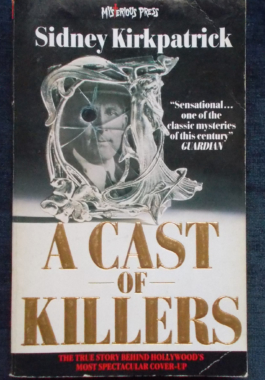 On February 1, 1922, the distinguished silent-film director William Desmond Taylor was shot dead in his Los Angeles bungalow. Reports of strange activities at the scene circulated soon after. When the police arrived, the head of Paramount Studios was burning a bundle of papers in the fireplace, and a well-known actress was searching the house for letters she claimed were hers. Despite a full-scale investigation - at one time there were over 300 suspects - the case was never solved; to this day it has remained a lingering Hollywood scandal. In 1967, more than forty years after Taylor's death, director King Vidor felt determined to solve the mystery which had haunted him throughout his career. He wanted to make a film about it. Through his intimate knowledge of both the studios and the stars, he succeeded - where dozens of professional detectives had failed - in discovering the identity of the murderer. But his findings were too explosive. He decided he could never go public and locked his evidence away. After Vidor's death in 1982, Sidney D. Kirkpatrick, Vidor's authorised biographer, gained access to the evidence and reconstructed the amazing story of Taylor's murder and Vidor's investigation. With a cast of suspects that includes the actress Mabel Normand, a reputed drug addict; the beautiful ingénue, Mary Miles Minter; Mary's domineering mother, Charlotte Shelby; Taylor's homosexual houseman; and Taylor's secretary, who bore an uncanny resemblance to Taylor's mysteriously elusive brother, this true crime story has all the elements of a classic murder mystery. Covered up for more than half a century, the full story can now be told in all its riveting, shocking detail. Contains black and white photographs.
On February 1, 1922, the distinguished silent-film director William Desmond Taylor was shot dead in his Los Angeles bungalow. Reports of strange activities at the scene circulated soon after. When the police arrived, the head of Paramount Studios was burning a bundle of papers in the fireplace, and a well-known actress was searching the house for letters she claimed were hers. Despite a full-scale investigation - at one time there were over 300 suspects - the case was never solved; to this day it has remained a lingering Hollywood scandal. In 1967, more than forty years after Taylor's death, director King Vidor felt determined to solve the mystery which had haunted him throughout his career. He wanted to make a film about it. Through his intimate knowledge of both the studios and the stars, he succeeded - where dozens of professional detectives had failed - in discovering the identity of the murderer. But his findings were too explosive. He decided he could never go public and locked his evidence away. After Vidor's death in 1982, Sidney D. Kirkpatrick, Vidor's authorised biographer, gained access to the evidence and reconstructed the amazing story of Taylor's murder and Vidor's investigation. With a cast of suspects that includes the actress Mabel Normand, a reputed drug addict; the beautiful ingénue, Mary Miles Minter; Mary's domineering mother, Charlotte Shelby; Taylor's homosexual houseman; and Taylor's secretary, who bore an uncanny resemblance to Taylor's mysteriously elusive brother, this true crime story has all the elements of a classic murder mystery. Covered up for more than half a century, the full story can now be told in all its riveting, shocking detail. Contains black and white photographs. -
 Ronald Joseph Ryan was hanged in Melbourne on February 3, 1967, following his conviction for the shooting murder of a prison warder during a daring escape from the maximum-security Pentridge prison thirteen months before. The decision of the Victorian government in December 1966 to proceed with Ryan’s death sentence sparked immediate media condemnation and angry political protests, and put the Liberal premier, Sir Henry Bolte, under siege for the duration of the case. State governments around the country moved to abolish the death penalty in the 1970s and 1980s, and Ronald Ryan became the last man to be hanged in Australia. But who was Ronald Ryan, and how did he come to be the focus of such dramatic political events? Drawing on previously unpublished documents and personal accounts — including details of Ryan’s childhood and his early turn to crime — this book reveals the truth about Ryan’s guilt. It also goes behind the scenes to tell for the first time of the life-long anguish of the judge who pronounced the death sentence, the inner workings of the secret cabinet meeting that decided Ryan’s fate, and the dramatic political process that resulted in the rejection of eleventh-hour appeals to save Ryan. Illustrated with black and white photographs.
Ronald Joseph Ryan was hanged in Melbourne on February 3, 1967, following his conviction for the shooting murder of a prison warder during a daring escape from the maximum-security Pentridge prison thirteen months before. The decision of the Victorian government in December 1966 to proceed with Ryan’s death sentence sparked immediate media condemnation and angry political protests, and put the Liberal premier, Sir Henry Bolte, under siege for the duration of the case. State governments around the country moved to abolish the death penalty in the 1970s and 1980s, and Ronald Ryan became the last man to be hanged in Australia. But who was Ronald Ryan, and how did he come to be the focus of such dramatic political events? Drawing on previously unpublished documents and personal accounts — including details of Ryan’s childhood and his early turn to crime — this book reveals the truth about Ryan’s guilt. It also goes behind the scenes to tell for the first time of the life-long anguish of the judge who pronounced the death sentence, the inner workings of the secret cabinet meeting that decided Ryan’s fate, and the dramatic political process that resulted in the rejection of eleventh-hour appeals to save Ryan. Illustrated with black and white photographs. -
 Australia has had its fair share of murders - the grisly, the macabre, the humdrum, the unsolved and the controversial. Men have been hanged who perhaps should never have been convicted; men have gone free who perhaps should have been found guilty. Just the chapter headings alone are enough to entice the reader: The Crimson Feather; Roadside Nightmare - the murder of a courting couple by William Moxley; The Pyjama Girl case, still unsolved to this day; The Walking Corpse ( dubbed the 'Mutilator Murders') and more.
Australia has had its fair share of murders - the grisly, the macabre, the humdrum, the unsolved and the controversial. Men have been hanged who perhaps should never have been convicted; men have gone free who perhaps should have been found guilty. Just the chapter headings alone are enough to entice the reader: The Crimson Feather; Roadside Nightmare - the murder of a courting couple by William Moxley; The Pyjama Girl case, still unsolved to this day; The Walking Corpse ( dubbed the 'Mutilator Murders') and more. -
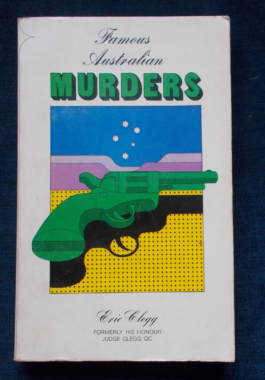 Eric Clegg, formerly His Honour Eric Clegg Q.C. is more than qualified to examine these famous trials and his expert viewpoint reveals many important and often controversial points which arose during the hearings. Cases contained in this volume include: The Kalgoorlie murders of two policemen in 1926, found down a disused mine-shaft; the Passionate Parson, acquitted on a charge of murdering his wife; the Lavers mstyery and the Sundown murders; the Pyjama Girl murder; the fantastic case of T. J. Ley, former Minister for Justice in New South Wales who was eventually convicted for the chalkpit murders and more. Illustrated with black and white photographs.
Eric Clegg, formerly His Honour Eric Clegg Q.C. is more than qualified to examine these famous trials and his expert viewpoint reveals many important and often controversial points which arose during the hearings. Cases contained in this volume include: The Kalgoorlie murders of two policemen in 1926, found down a disused mine-shaft; the Passionate Parson, acquitted on a charge of murdering his wife; the Lavers mstyery and the Sundown murders; the Pyjama Girl murder; the fantastic case of T. J. Ley, former Minister for Justice in New South Wales who was eventually convicted for the chalkpit murders and more. Illustrated with black and white photographs. -
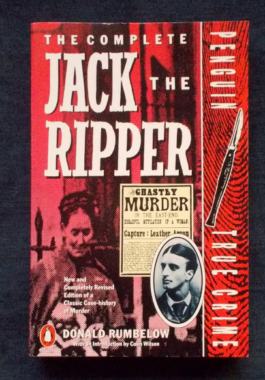 With the advantage of access to some of Scotland Yard's most confidential papers, Donald Rumbelow lays out all the evidence in the most comprehensive summary ever written about the Ripper. Rumbelow, a former London Metropolitan policeman, and an authority on crime, has subjected every theory – including those that have emerged in recent years – to the same deep scrutiny. He also examines the mythology surrounding the case and provides some fascinating insights into the portrayal of the Ripper on stage and screen and on the printed page. More seriously, he also examines the horrifying parallel crimes of the Düsseldorf Ripper and the Yorkshire Ripper in an attempt to throw further light on the atrocities of Victorian London.
With the advantage of access to some of Scotland Yard's most confidential papers, Donald Rumbelow lays out all the evidence in the most comprehensive summary ever written about the Ripper. Rumbelow, a former London Metropolitan policeman, and an authority on crime, has subjected every theory – including those that have emerged in recent years – to the same deep scrutiny. He also examines the mythology surrounding the case and provides some fascinating insights into the portrayal of the Ripper on stage and screen and on the printed page. More seriously, he also examines the horrifying parallel crimes of the Düsseldorf Ripper and the Yorkshire Ripper in an attempt to throw further light on the atrocities of Victorian London. -
 The author took a job in an Australian prison because - well, he needed a job, and any job would do. What had been a stop gap became and all-absorbing preoccupation with the problem of men in prison. One day, he was asked if he remembered the Greek bloke who had killed his wife with half a house brick. He couldn't remember the particular Greek - and he realised that over the seven years of his employment there, that the stone and steel had crept into his heart to the extent that a man who had killed his wife with half a house brick had left no impression on him. In search of what beliefs and values he had left to him after prolonged exposure to the brutality, cynicism and despair of a big maximum-security prison, the author examines his experiences, not as a psychologist, but as a man whose profession is psychology. In the process, comes to several important conclusions.
The author took a job in an Australian prison because - well, he needed a job, and any job would do. What had been a stop gap became and all-absorbing preoccupation with the problem of men in prison. One day, he was asked if he remembered the Greek bloke who had killed his wife with half a house brick. He couldn't remember the particular Greek - and he realised that over the seven years of his employment there, that the stone and steel had crept into his heart to the extent that a man who had killed his wife with half a house brick had left no impression on him. In search of what beliefs and values he had left to him after prolonged exposure to the brutality, cynicism and despair of a big maximum-security prison, the author examines his experiences, not as a psychologist, but as a man whose profession is psychology. In the process, comes to several important conclusions. -
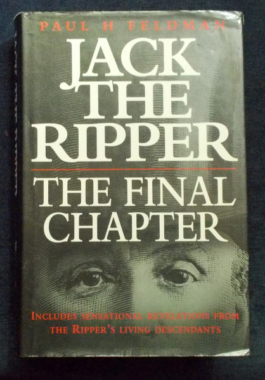 Feldman makes a convincing case for his suspect. His team spent a great deal of time, money and effort following leads in obscure documents, some of which had never been seen by anyone, to conclusively prove his theory. Illegitimate children, extra-marital affairs, high society, royal connections and a mysterious diary and a watch are just some of what came to light. Illustrated with black and white photographs.
Feldman makes a convincing case for his suspect. His team spent a great deal of time, money and effort following leads in obscure documents, some of which had never been seen by anyone, to conclusively prove his theory. Illegitimate children, extra-marital affairs, high society, royal connections and a mysterious diary and a watch are just some of what came to light. Illustrated with black and white photographs. -
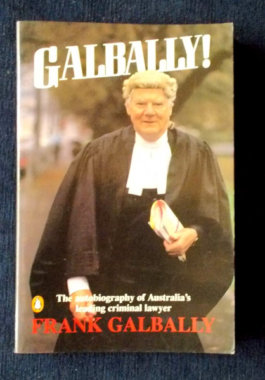
Galbally! Frank Galbally
$9.00Frank Galbally CBE (1922 - 2005) dominated Australian Law for over four decades, frequently at the centre of controversy and always at the heart of things. He represented everyone from painters and dockers to a talking cockatoo; had audiences with popes and took on the Greek Colonels and was embroiled in the politics of 1975 and the policies of Collingwood Football Club. The Krope trial, the Costigan Commission, Kevin Barlow's appeal...the number of legal trials in which Galbally was involved extraordinary and the names became household words. This autobiography contains some of his most famous cases, with a few fighting words regarding crucial aspects of Australian public affairs such as police corruption and the royal commission into crime. Illustrated with black and white photographs. -
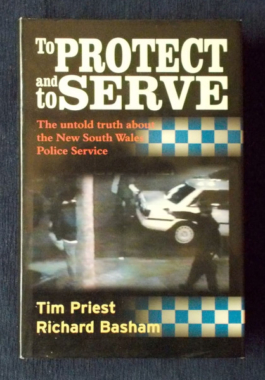 Almost every month in New South Wales, there are reports of police corruption and a police service under attack, from the criminals it tries to put away and the people it tries to protect and serve. Are the reports mere media sensationalism, or is the New South Wales Police in serious trouble? And if so, where did it go wrong? Priest was a cop who loved his job and gave everything he had to fight crime on the drug-ridden streets of Cabramatta. Yet he found his biggest battle was not with the drug gangs but with the very service he worked for. Eventually he could stand it no longer and spoke out about the bizarre policy decisions, politics, bureaucratic bungling and chronic lack of resources. For this he was labelled a whistle-blower and ultimately railroaded out of the police force. Yet a parlimentary enquiry and the testimony of other officers proved that Tim was not only telling the truth, but this was only the tip of the iceberg of what is really wrong with the New South Wales Police Force. While crime continues to spiral out of control, morale plummets among the rank and file police and experienced cops find they are at the mercy of a promotion system that leaves them nowhere to go but out. Tim teams up with Richard Basham, a man of vast experience through his involvement in a number of advisory boards, criminal investigations and personal friendships with ordinary cops, to reveal the untold story of the police service.
Almost every month in New South Wales, there are reports of police corruption and a police service under attack, from the criminals it tries to put away and the people it tries to protect and serve. Are the reports mere media sensationalism, or is the New South Wales Police in serious trouble? And if so, where did it go wrong? Priest was a cop who loved his job and gave everything he had to fight crime on the drug-ridden streets of Cabramatta. Yet he found his biggest battle was not with the drug gangs but with the very service he worked for. Eventually he could stand it no longer and spoke out about the bizarre policy decisions, politics, bureaucratic bungling and chronic lack of resources. For this he was labelled a whistle-blower and ultimately railroaded out of the police force. Yet a parlimentary enquiry and the testimony of other officers proved that Tim was not only telling the truth, but this was only the tip of the iceberg of what is really wrong with the New South Wales Police Force. While crime continues to spiral out of control, morale plummets among the rank and file police and experienced cops find they are at the mercy of a promotion system that leaves them nowhere to go but out. Tim teams up with Richard Basham, a man of vast experience through his involvement in a number of advisory boards, criminal investigations and personal friendships with ordinary cops, to reveal the untold story of the police service. -

Blood Stain: Peter Lalor
$15.00On 29 February 2000, Katherine Knight - mother of four, and a grandmother - seduced then stabbed John Price 37 times. A former abattoir worker, she skinned him. A loving partner, she cooked him with vegetables, making a soup with his head. She made gravy, and left him on plates for his family...Price was her de facto, and he wanted out. And Ketharine didn't like that...People said that most of the time Katherine seemed normal - until she got angry. She was judged to be legally sane when she committed a crime so horrible the media shied away from the details. Lalor covered the trial and wanted to know what made Knight go way over the borderline. He uncovers the layers of her dysfunction, opens the door of 84 St. Andrews Street and heads into the lives of Knight's ex-partners, her family and the locals of Aberdeen, New South Wales. Illustrated with colour photographs. -
 Ron Williamson was a star college sportsman in the small town of Ada, Oklahoma. When he left to pursue his dreams he seemed destined for glory. But years of injury, drinking, drugs and women took their toll, and he returned to Ada a lonely drifter. Soon after his homecoming, a local cocktail waitress was raped and murdered. With no immediate leads, the police worked the case for five years before arresting Williamson and charging him with her murder. Despite no physical evidence, and based largely on the testimony of jailhouse snitches, he was found guilty at trial and sent to death row. Left to await his fate, Williamson was the only person to know the terrible truth: that an innocent man had been sent on a journey to hell. A journey from which he might never return...Illustrated with black and white photographs.
Ron Williamson was a star college sportsman in the small town of Ada, Oklahoma. When he left to pursue his dreams he seemed destined for glory. But years of injury, drinking, drugs and women took their toll, and he returned to Ada a lonely drifter. Soon after his homecoming, a local cocktail waitress was raped and murdered. With no immediate leads, the police worked the case for five years before arresting Williamson and charging him with her murder. Despite no physical evidence, and based largely on the testimony of jailhouse snitches, he was found guilty at trial and sent to death row. Left to await his fate, Williamson was the only person to know the terrible truth: that an innocent man had been sent on a journey to hell. A journey from which he might never return...Illustrated with black and white photographs. -
 On Christmas Eve 2002, Laci Peterson, a young wife and mother-to-be, disappeared from her home in Modesto, California...Praying for a happy ending, friends and family stood by Laci's grieving husband Scott. Four months later, Laci's decomposed body was found in the murky waters of San Francisco Bay. The body of her child had washed ashore about a mile away, after a possible "coffin birth". It was a sad closure to an exhaustive search, and a grim end to a marriage that by all account had appeared to be perfect. But the authorities already had a prime suspect...Scott Peterson's behavior had cast a mysterious shadow over the death of his pregnant wife - his alibi on the day of the disappearance was questionable; he admitted to an affair with another woman; and when he was finally charged with capital murder, he had altered his appearance. But it was only after a stunning criminal trial - packed with even more shocking revelations - that a jury convicted Scott Peterson of murder and sentenced him to death. With black and white photographs.
On Christmas Eve 2002, Laci Peterson, a young wife and mother-to-be, disappeared from her home in Modesto, California...Praying for a happy ending, friends and family stood by Laci's grieving husband Scott. Four months later, Laci's decomposed body was found in the murky waters of San Francisco Bay. The body of her child had washed ashore about a mile away, after a possible "coffin birth". It was a sad closure to an exhaustive search, and a grim end to a marriage that by all account had appeared to be perfect. But the authorities already had a prime suspect...Scott Peterson's behavior had cast a mysterious shadow over the death of his pregnant wife - his alibi on the day of the disappearance was questionable; he admitted to an affair with another woman; and when he was finally charged with capital murder, he had altered his appearance. But it was only after a stunning criminal trial - packed with even more shocking revelations - that a jury convicted Scott Peterson of murder and sentenced him to death. With black and white photographs. -
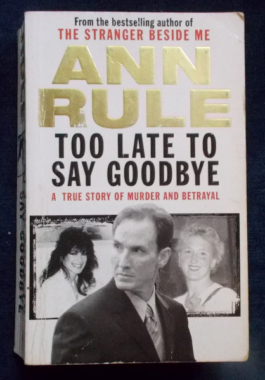 Beautiful Jenn Corbin appeared to have it all: two dear little boys, a posh home in one of the upscale suburbs of Atlanta, expensive cars, a plush houseboat and a husband - Dr. Bart Corbin, a successful dentist - who was tall, handsome, and brilliant. Then in December 2004, Jenn was found dead with a bullet in her head. Apparently a suicide. But Gwinnett County detective Marcus Head was not totally convinced, nor was Jenn's family, who could not believe she would take her own life. Only later would detectives learn that another beautiful woman in Dr. Corbin's past had been found dead in exactly the same way - and who had also been ruled a suicide...
Beautiful Jenn Corbin appeared to have it all: two dear little boys, a posh home in one of the upscale suburbs of Atlanta, expensive cars, a plush houseboat and a husband - Dr. Bart Corbin, a successful dentist - who was tall, handsome, and brilliant. Then in December 2004, Jenn was found dead with a bullet in her head. Apparently a suicide. But Gwinnett County detective Marcus Head was not totally convinced, nor was Jenn's family, who could not believe she would take her own life. Only later would detectives learn that another beautiful woman in Dr. Corbin's past had been found dead in exactly the same way - and who had also been ruled a suicide... -
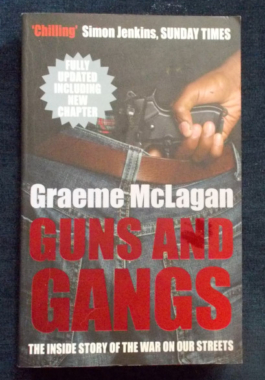 McLagan lifts the lid on a hugely important modern-day problem; an expensive both in terms of money and young lives. After terrorism, the single greatest worry for law enforcement agencies is gun crime and in particular 'black on black' shootings. McLagan has had exclusive access to police files and case histories. Together with his findings from these records are interviews with police officers, victims and their families, witnesses, lawyers and perpetrators of gun crime. The result is a unique and horrifying exposé of the disturbing truth behind this plague on the streets.
McLagan lifts the lid on a hugely important modern-day problem; an expensive both in terms of money and young lives. After terrorism, the single greatest worry for law enforcement agencies is gun crime and in particular 'black on black' shootings. McLagan has had exclusive access to police files and case histories. Together with his findings from these records are interviews with police officers, victims and their families, witnesses, lawyers and perpetrators of gun crime. The result is a unique and horrifying exposé of the disturbing truth behind this plague on the streets. -
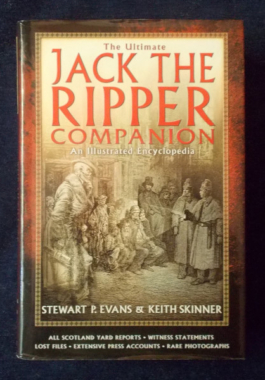 This really is the ultimate for Ripperologists - an encyclopedic work, solidly researched and profusely illustrated, collated from all the known and still-existing official records and supplemented by contemporary press reports. It presents. for the first time in one volume, a prime-source reference book on the eleven shocking prostitute murders that took place in the East End of London between 1888 and 1891. While there is no doubt that the Whitechapel Murders, as they were classified by Scotland Yard, were committed by more than one person, no one knows how many of the killings can be attributed to a single culprit. More than one murderer wore the guise of Jack the Ripper, and the identities of all suspects to this day remain unknown. Divorcing the facts of the Ripper case from the myths that have proliferated in fiction and film, this is a factual, documented narrative of the entire series of crimes, their forensic evidence, the official suspects and possible accomplices, police reports, inquests, newspaper articles of the day and rare photographs.
This really is the ultimate for Ripperologists - an encyclopedic work, solidly researched and profusely illustrated, collated from all the known and still-existing official records and supplemented by contemporary press reports. It presents. for the first time in one volume, a prime-source reference book on the eleven shocking prostitute murders that took place in the East End of London between 1888 and 1891. While there is no doubt that the Whitechapel Murders, as they were classified by Scotland Yard, were committed by more than one person, no one knows how many of the killings can be attributed to a single culprit. More than one murderer wore the guise of Jack the Ripper, and the identities of all suspects to this day remain unknown. Divorcing the facts of the Ripper case from the myths that have proliferated in fiction and film, this is a factual, documented narrative of the entire series of crimes, their forensic evidence, the official suspects and possible accomplices, police reports, inquests, newspaper articles of the day and rare photographs. -
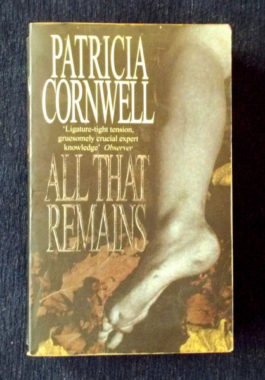 Kay Scarpetta III. In Richmond, Virginia, young lovers are dying. So far, four couples in the area have disappeared, only to be found months later as mutilated corpses. When the daughter of the president's newest drug czar vanishes along with her boyfriend, Dr. Kay Scarpetta knows time is short. Following a macabre trail of evidence that ties the present homicides to a grisly crime in the past, Kay must draw upon her own personal resources to track down a murderer who is as skilled at eliminating clues as Kay is at finding them...
Kay Scarpetta III. In Richmond, Virginia, young lovers are dying. So far, four couples in the area have disappeared, only to be found months later as mutilated corpses. When the daughter of the president's newest drug czar vanishes along with her boyfriend, Dr. Kay Scarpetta knows time is short. Following a macabre trail of evidence that ties the present homicides to a grisly crime in the past, Kay must draw upon her own personal resources to track down a murderer who is as skilled at eliminating clues as Kay is at finding them... -
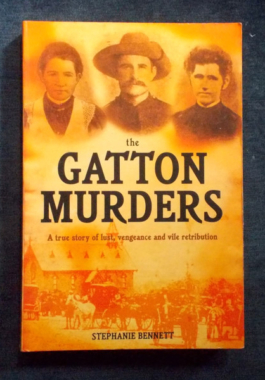 Boxing Day, 1898. Three members of the Murphy family - Michael, Ellen and Norah — are returning to the family farm after a trip in to Gatton, a small town west of Brisbane. On a deserted, moonlit road a few miles out of town they are ambushed. Their horse is killed and the three young people are taken to a remote paddock where the women are brutally raped and bludgeoned to death - and Michael is shot. By the time the police arrived the following day, locals had swarmed all over the crime scene, obliterating the evidence. What followed was a hopelessly bungled investigation and the crime remained unsolved. Fear and mistrust rocked the farming community. Theories about the perpetrator abounded. Was this the work of a sex-crazed tramp? Could a member of the Murphy family have been involved - or was revenge the motive? Stephanie Bennett's detailed examination of this baffling crime after many years spent scouring the available archival material, interviewing relatives of suspects and victims and visiting far flung areas of Queensland brings a new and disturbing theory to the surface that is both chilling and challenging. Queensland's most infamous unsolved murder.
Boxing Day, 1898. Three members of the Murphy family - Michael, Ellen and Norah — are returning to the family farm after a trip in to Gatton, a small town west of Brisbane. On a deserted, moonlit road a few miles out of town they are ambushed. Their horse is killed and the three young people are taken to a remote paddock where the women are brutally raped and bludgeoned to death - and Michael is shot. By the time the police arrived the following day, locals had swarmed all over the crime scene, obliterating the evidence. What followed was a hopelessly bungled investigation and the crime remained unsolved. Fear and mistrust rocked the farming community. Theories about the perpetrator abounded. Was this the work of a sex-crazed tramp? Could a member of the Murphy family have been involved - or was revenge the motive? Stephanie Bennett's detailed examination of this baffling crime after many years spent scouring the available archival material, interviewing relatives of suspects and victims and visiting far flung areas of Queensland brings a new and disturbing theory to the surface that is both chilling and challenging. Queensland's most infamous unsolved murder. -
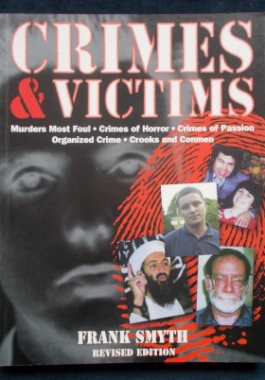
Revised Edition. Here are the true life stories of men and women who have shocked the world with their outrageous crimes - and those who have suffered and paid the price. Featured in this gallery of ultimate criminals: Dr, Crippen; Jeremy Bamber; The Boston Strangler; George Haigh; Snyder and Grey; Harold Shipman; Ted Bundy; Donald Neilson; Peter Sutcliffe; Ian Huntley; Dennis Nilsen; Fred and Rosemary West; Brady and Hindley; Ruth ellis; Sam Sheppard; The Krays; Al Capone; The Great Train Robbery; Osama Bin Laden; Timothy McVeigh; Ilich Ramirez Sanchez. Illustrated with haunting black and white photographs.


